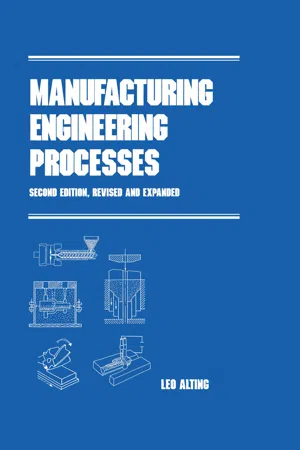Composite Classes
Composite classes in programming refer to classes that are composed of other classes or objects. This allows for the creation of more complex and specialized objects by combining the functionality of multiple classes. By using composite classes, developers can create modular and reusable code, leading to more efficient and maintainable software systems.
6 Key excerpts on "Composite Classes"
- Shashanka Rajendrachari, Orhan Uzun(Authors)
- 2021(Publication Date)
- Bentham Science Publishers(Publisher)
...Composites R. Shashanka, Orhan Uzun Abstract In this chapter, we have discussed the basics of composite materials, types, properties, and applications. Students will learn the fundamentals of composite materials and their importance in many engineering fields. Composite materials can be defined as “the combination of a hard and a soft material” or “these are the materials composed of different parts with specific ratios”. This chapter comprises of the advantages and disadvantages of composites and also focuses on different fabrication methods of preparing composites. Fundamentals of nanocomposites and their recent improvements are also added in this chapter. Keywords: Ceramic matrix, Composites, Fabrication, Fibers, Fiber-reinforced plastics, Fillers, Laminates, Metal matrix, Nanocomposites, Polymer matrix, Reinforcements, Resin. 1. INTRODUCTION In recent years, composite materials are becoming more popular due to the possibility of fabricating high-tech materials for modern applications. Composites (see Fig. 1) are revolutionary materials that have been used in various engineering fields for more than 60 years [ 1, 2 ]. The important advantages of composite materials over other bulk materials are their high strength to low weight ratios, their stiffness combined with low density [ 3 ]. The reinforcing phases are always harder, stronger than the matrix constituent, and impart greater strength and stiffness to the matrix. Composite is a future technology, and therefore, more and more research work is going on all over the world to improve the microstructure, mechanical properties, electrical properties, corrosion resistance properties, and surface properties. One of the earliest man-made composite materials are bricks made up of straw and mud for constructing buildings during the Egyptian era, as drawn in their tomb paintings [ 1 ]...
- Sherif D. El Wakil(Author)
- 2019(Publication Date)
- CRC Press(Publisher)
...9 Characteristics, Fabrication, and Design of Composites 9.1 Overview A composite can be defined as a material made up of two (or more) identifiable materials (or phases), combined usually in an ordered fashion to provide specific properties different from and superior to those of the individual materials. Those two materials that constitute any composite are referred to as the matrix and the reinforcement. It is customary to classify composites based on the nature of their matrix materials. Based on that classification, there are three main groups: polymer-matrix, metal-matrix, and ceramic-matrix composites. Most naturally occurring structural materials such as timber are, in fact, composites. Moreover, the merits of crude forms of composites have been known for centuries; for instance, straw-reinforced clay was reportedly used as a building material in Egypt in 1500 BC. It is only in the past 60 years that composites—and fiber-reinforced polymers in particular—have become important engineering material. New synthetic high-strength, high-modulus fibers and new resins and matrix materials have elevated fiber-reinforced composites into the material of choice for innovative lightweight, high-strength engineered products. These developments, along with established engineering design criteria and special processing technology, have advanced fiber-reinforced composites close to the realm of a commodity material of construction. In the areas of automobile bodies, recreational boat hulls, and bathtubs and shower stalls, fiberglass-reinforced organic polymer resins have indeed become the material of choice. In more advanced applications, the first completely fiber-reinforced polymeric resin composite aircraft, the Boeing 787, came into existence in the 1980s and is now widely used by various airlines...
- eBook - ePub
Composite Materials
Properties, Characterisation, and Applications
- Amit Sachdeva, Pramod Kumar Singh, Hee Woo Rhee, Amit Sachdeva, Pramod Kumar Singh, Hee Woo Rhee(Authors)
- 2021(Publication Date)
- CRC Press(Publisher)
...3 Properties of Composite Materials Arvind Kumar Chauhan, Amarjeet Singh, Deepak Kumar and Kuldeep Mishra Contents 3.1 Introduction 3.2 Properties of Polymer-Matrix Composites 3.2.1 Electrical Properties of Polymer Composites 3.2.2 Mechanical Properties of Polymer Composites 3.3 Properties of Ceramic-Matrix Composites 3.3.1 Electrical Properties of Ceramic-Matrix Composites 3.3.2 Mechanical Properties of Ceramic-Matrix Composites 3.4 Properties of Metal-Matrix Composites 3.5 Properties of Composite Materials used in Energy Storage/Conversion Devices 3.6 Conclusions References 3.1 Introduction Composite materials have a macroscopic structure containing two or more non-soluble materials. One old and well-known example of a composite material is mud brick, which is prepared by fire-drying mud. It has good compressive strength but poor tensile strength. Strong fibrous straw can be a good reinforcing material to be added to mud to make excellent building blocks. The straw is used to bind clay and concrete to form an admirable building material called cob. The most appropriate properties of composite materials are: High stiffness and strength across a wide temperature range High Young’s modulus Highly resistive to corrosion/oxidation Low density and light weight High thermal and electrical conductivity High wear resistance. Concrete, a mixture of small stones, cement, and sand, has good compressive strength. Its tensile strength is enhanced by adding metal rods or wires, when it is called reinforced concrete or reinforced cement concrete (Figure 3.1a). One constituent in composite materials, the reinforcing phase in the form of fibers, particles, or flakes, is embedded in the other continuous constituent, which is called the matrix. The properties of the reinforcing and matrix phases are complementary to provide the best performance of the composite material for a particular application...
- eBook - ePub
Introduction to Engineering Mechanics
A Continuum Approach, Second Edition
- Jenn Stroud Rossmann, Clive L. Dym, Lori Bassman(Authors)
- 2015(Publication Date)
- CRC Press(Publisher)
...15 Case Study 7: Engineered Composite Materials In Chapter 14, we noted that some biological materials are “composites,” comprised of multiple materials with significantly different physical properties. The resulting combined materials have characteristics that are different from any of their component materials. Many engineered composite materials are designed with similar objectives, often yielding materials that are stronger, lighter, or less expensive than traditional materials. We characterize the components as “matrix” and “reinforcement;” composite materials should have at least one of each. The matrix material surrounds and supports the reinforcement materials by maintaining their relative positions. The reinforcements impart their particular mechanical and physical properties to enhance the matrix properties. Like biological materials, engineered composites are often anisotropic, due to the orientation of the reinforcements. Engineered composite materials include concrete (and its steel-reinforced form as well), fiber-reinforced plastic (including fiberglass), metal composites, and ceramic composites. 15.1 Concrete Concrete itself is a “composite,” in the sense that it results from the combination of several materials. It is composed of (1) coarse granular aggregate sometimes called filler, embedded in (2) a hard matrix (cement or another binder) that fills the spaces among the aggregate particles and binds them together with the aid of (3) water. The ancient Roman architect/engineer Vitruvius * first wrote down a recipe for concrete—his version included volcanic ash as the binder. The Roman Colosseum was constructed from concrete; more recently, the Hoover Dam and Panama Canal have made good use of this material. It is now the most widely used structural material worldwide. We often use steel bars (which are very strong) to reinforce concrete (which is stronger in compression than in tension)...
- eBook - ePub
Composites Innovation
Perspectives on Advancing the Industry
- Probir Guha, Probir Guha(Authors)
- 2021(Publication Date)
- CRC Press(Publisher)
...7 Applications and Product Design Composites vs. Multi-Material Gajendra Pandey and Vamshi Gudapati DOI: 10.1201/9781003161738-7 Contents Application and Evolution of Composites Based on Strength and Modulus Advantages of Composites Different Classes of Composites Composite Parts Design References Application and Evolution of Composites Based on Strength and Modulus During the Stone Age, materials of choice were ceramics, glasses, and natural composites. With the industrial revolution, steel and alloys from cast iron technology were readily available and played a dominant role in design. However, the rate of development of new alloys slowed down in the 1960s paving way for innovation of new classes of materials in polymers, ceramics, and composites. Advances in polymer resins and glass fibers in the 1930s, along with the development of carbon fiber in the 1960s, laid the groundwork for materials used in fiber-reinforced polymer (FRP) composites. Materials selection in mechanical design, Third Edition By M. F. Ashby (Publisher: Elsevier Science & Technology). Application of FRP composites first started and grew with boats. During World War II, military aircraft materials such as wood were substituted by lightweight, strong, weather, and corrosion-resistant composites. As corrosion of metals became an issue, corrosion-resistant composites were used in pipes and later adopted by the oil & gas industry. Development of composite manufacturing techniques such as pultrusion, vacuum bag molding, and filament winding enhanced unique properties of composites for high-performance engineering applications including large-scale rocket motors for exploration of space. With the proliferation of polymer composites, fiber-reinforced ceramic composites have become attractive alternatives to refractory metals and alloys...
- Alting(Author)
- 2020(Publication Date)
- CRC Press(Publisher)
...These problems are discussed in more detail in some of the later chapters. 3.4 CLASSIFICATION OF MATERIALS As mentioned previously, it is very difficult to provide broad information regarding all the important engineering materials in this context. Consequently, only a general survey will be given to allow a rough evaluation of the suitability of the different material groups for various processes. From this survey and the process descriptions in the later chapters, a reasonable background for the evaluation of the final properties of the materials will be available. Engineering materials can be divided into groups showing important relationships. In this context the traditional classification shown in Fig. 3.1 will be followed. The main groups are metallic materials, nonmetallic materials, and composite materials. Composite materials are built up from two or more materials, so that new and special properties are obtained. Metallic materials are subdivided into ferrous and nonferrous metals. The nonmetallic materials are subdivided into polymers, ceramics, and glasses, but the group covers many other materials (wood, concrete, bricks, etc.) that are not important for the present discussion. FIGURE 3.1 Classification of some of the engineering materials. 3.5 METALLIC MATERIALS 3.5.1 Bonding and Structure Metals are characterized by the metallic bonding, where the metal ions are held together by an “electron cloud.” This type of bonding has a high mobility of the free (valence) electrons and accounts in general for the high strength level, the ductility (ability to be deformed without fracture), and the relatively high melting temperature of metals. These general tendencies can be influenced by many factors; consequently, exceptions are common. Metals have a crystalline structure with predominantly body-centered cubic, face-centered cubic, or close-packed hexagonal lattice structures...





